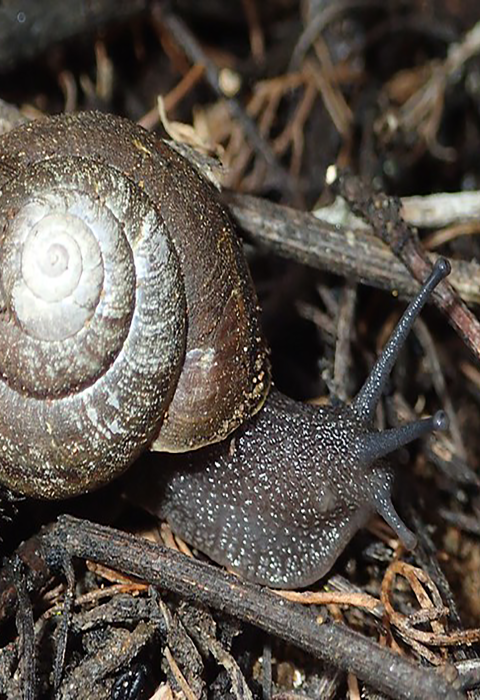A rare snail found only around Los Osos and Morro Bay along the central California coast is crawling toward recovery thanks to survey, habitat protection and conservation efforts with local partners. The U.S. Fish and Wildlife Service today announced the Morro shoulderband snail is no longer in danger of extinction, improving its conservation status from endangered to threatened under the Endangered Species Act (ESA).
“The Endangered Species Act is a catalyst for recovery, and we know it’s working when we see species large and small take steps toward delisting,” said Cat Darst, Assistant Field Supervisor for the Service in Ventura, Calif. “Thanks to city, county and state efforts that include habitat protection and increased surveying, Morro shoulderband snail numbers are now in the thousands rather than hundreds.”
Service partners supporting the snail’s recovery include the community of Los Osos, private landowners and local biologists, as well as the California Department of Parks and Recreation, California Department of Fish and Wildlife, Morro Coast Audubon Society, Land Conservancy of San Luis Obispo and the County of San Luis Obispo.
Despite conservation gains, the Morro shoulderband snail is still threatened by habitat loss and fragmentation due to land development, habitat degradation from invasive plants, wildfire and changing climate conditions, so it still requires ESA protection until these threats can be reduced or eliminated.
The Service also announced a 4(d) rule for the species to provide incentives for additional conservation efforts, allowing select activities that facilitate conservation of the species, even if they result in some potential loss of individuals. The 4(d) rule will enhance conservation of the Morro shoulderband snail by allowing activities that contribute to its recovery, such as habitat restoration and fire hazard reduction.
Snails are key contributors to the ecosystems they inhabit, feeding on decaying plant material and providing a food source for a diversity of animals including birds, reptiles, amphibians and mammals. Most of their feeding, reproduction, movement and growth occurs during California’s rainy season, which typically occurs from October through April.
The Service considered public comments on a proposed rule to reclassify the Morro shoulderband snail during a 60-day comment period from July 24 to September 22, 2020. The final rule will publish in the Federal Register on February 3, 2022 and will be available at http://www.regulations.gov under docket number FWS–R8–ES–2019–0025.


